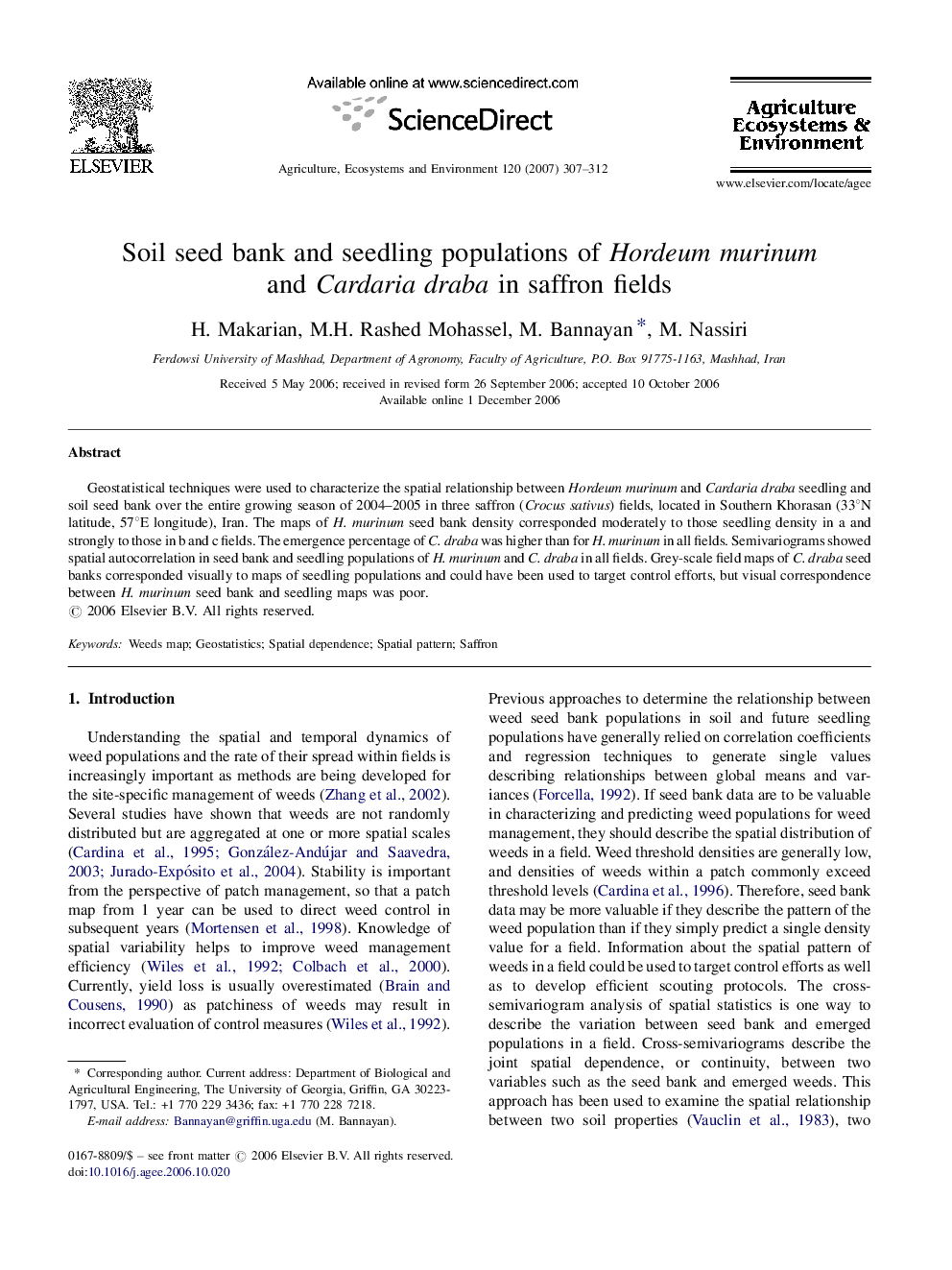| Article ID | Journal | Published Year | Pages | File Type |
|---|---|---|---|---|
| 2415611 | Agriculture, Ecosystems & Environment | 2007 | 6 Pages |
Geostatistical techniques were used to characterize the spatial relationship between Hordeum murinum and Cardaria draba seedling and soil seed bank over the entire growing season of 2004–2005 in three saffron (Crocus sativus) fields, located in Southern Khorasan (33°N latitude, 57°E longitude), Iran. The maps of H. murinum seed bank density corresponded moderately to those seedling density in a and strongly to those in b and c fields. The emergence percentage of C. draba was higher than for H. murinum in all fields. Semivariograms showed spatial autocorrelation in seed bank and seedling populations of H. murinum and C. draba in all fields. Grey-scale field maps of C. draba seed banks corresponded visually to maps of seedling populations and could have been used to target control efforts, but visual correspondence between H. murinum seed bank and seedling maps was poor.
